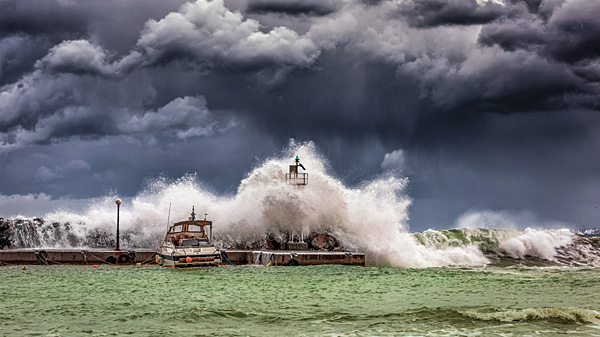With super typhoons like Mangkhut being the ‘new normal’ now, does Hong Kong have what it takes to win the battle against such storms? We examine the odds…

Duct tape? Why are Hongkongers so obsessed with duct tape? That would have been the question uppermost in the mind of any first-time visitor to Hong Kong back in September this year.
Indeed, the sight of Hongkongers wheeling away from their local Wellcome with a trolleyful of this silvery-grey sealant was certainly odd. Odder still is the widespread belief that a few strips of insulation tape would provide salvation from Typhoon Mangkhut, the looming extreme weather event set to bring a level of devastation to the city not seen since the Great Hong Kong Typhoon of 1937, a tropical cyclone that took the lives of 11,000 people.

Lessons, though, clearly have been learnt. Despite wind speeds in excess of 230km per hour being recorded as the typhoon made landfall in Hong Kong, there were no fatalities. Some 400 people, however, were injured, while 46,000 trees were felled. Elsewhere, Mangkhut’s passing left a rather more deadly legacy in its wake, with 64 people reported dead in the Philippines and 2.5 million forced to flee their homes in Southeast China.
So, just how did Hong Kong manage to weather this storm and emerge relatively unscathed? Well, the answer is ‘experience’. Although the official records on Hong Kong weather only date back to 1946, there are less official sources that attest to the city’s long battle with the elements. The first mention of a storm that seems at least the equal of Mangkhut in strength came in 1874, when a super typhoon took the lives of 2,000 people in Hong Kong. Again, in 1906, an undetected super typhoon made landfall, killing 5% of the population in one night. Just over 30 years later, it was the turn of the aforementioned Great Hong Kong Typhoon, which wiped away centuries-old villages and caused unprecedented destruction.

In the 80 years since then, Hong Kong has hardly been free from such buffeting, with the last half-century alone having seen five particularly serious typhoons hit the city – Rose (1971), Ellen (1983), York (1999), Vicente (2012) and Hato (2017). None of those, however, could match the most recent storm in terms of fury. And yet, flattened foliage aside, the city still emerged relatively unscathed.
Part of the reason for this lies in the sturdiness of many Hong Kong buildings. Since 2004, all residential structures in the city have had to comply with the Code of Practice on Wind Effects in Hong Kong, a building regulation that requires that high-rise blocks must withstand far fiercer gales than Mangkhut manifested even at its peak.

On top of that, there was the effectiveness with which Hong Kong’s emergency services prepared the city’s populace for the onslaught to come. But according to many environmental scientists, these may all be just short-term solutions as weather events of the magnitude of Mangkhut are becoming the ‘new normal’.
Explaining the science side of things, Professor Xie Shangping from University of California’s Scripps Institution of Oceanography says: “Warm sea surface temperatures help intensify tropical cyclones. This year, sea surface temperatures have been abnormally warm in many parts of the world, as part of the general global warming trend.”

The threat is even more acute in Hong Kong, where the surrounding sea levels continue to rise by an average of 2.77mm per year. Exacerbating things still further are the many land reclamation initiatives underway around Hong Kong Island, all of which leave many residents exposed to the natural elements to a greater degree.
Urging immediate action is Leung Wing-mo, the current official spokesperson for the Hong Kong Meteorological Society. Seeing the future as requiring a very different kind of readiness, he says: “On the whole, Hong Kong is not prepared for the kind of natural disasters we are likely to see in the future. The government and all emergency services need to start putting plans in place if we are to survive the far more severe and frequent extreme weather conditions that are likely to be commonplace in the future.”

As the world’s busiest seaport, Hong Kong’s past and present success story is anchored in its unparalleled marine access and its matchless natural harbour. Now, though, these very nautical elements that allowed it to become a global trade hub threaten its future status and continued existence.
Indeed, according to many environmentalists, unless the powers-that-be wake up to the very real dangers that threaten Asia’s World City, there won’t be enough duct tapes in the world to plug the expanding gaps in its oceanic defences.
Text: Suchetana Mukhopadhyay



